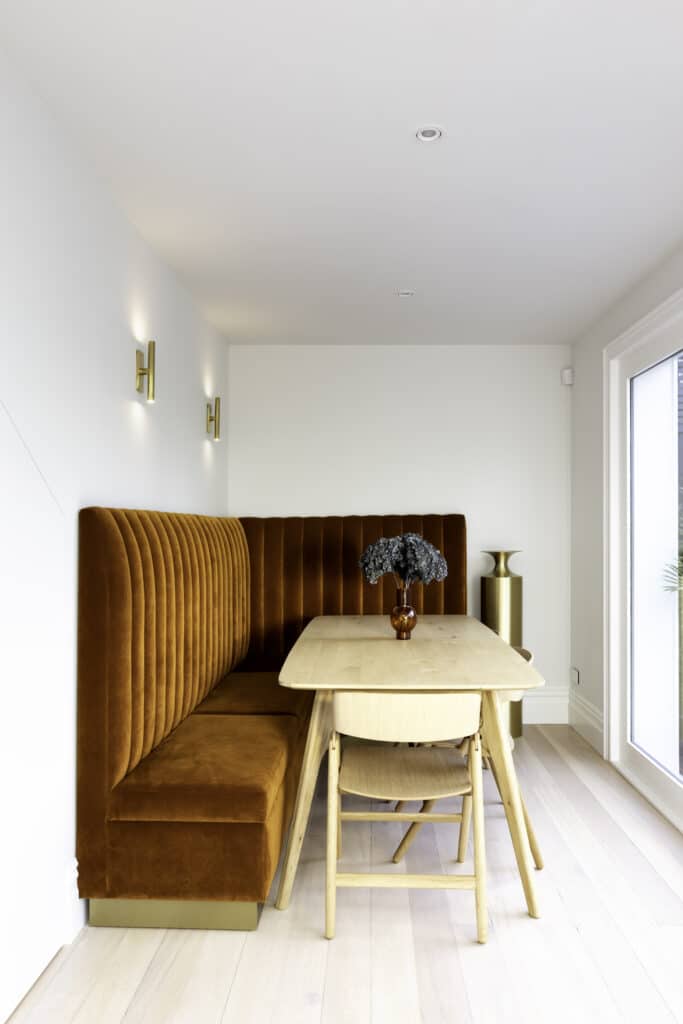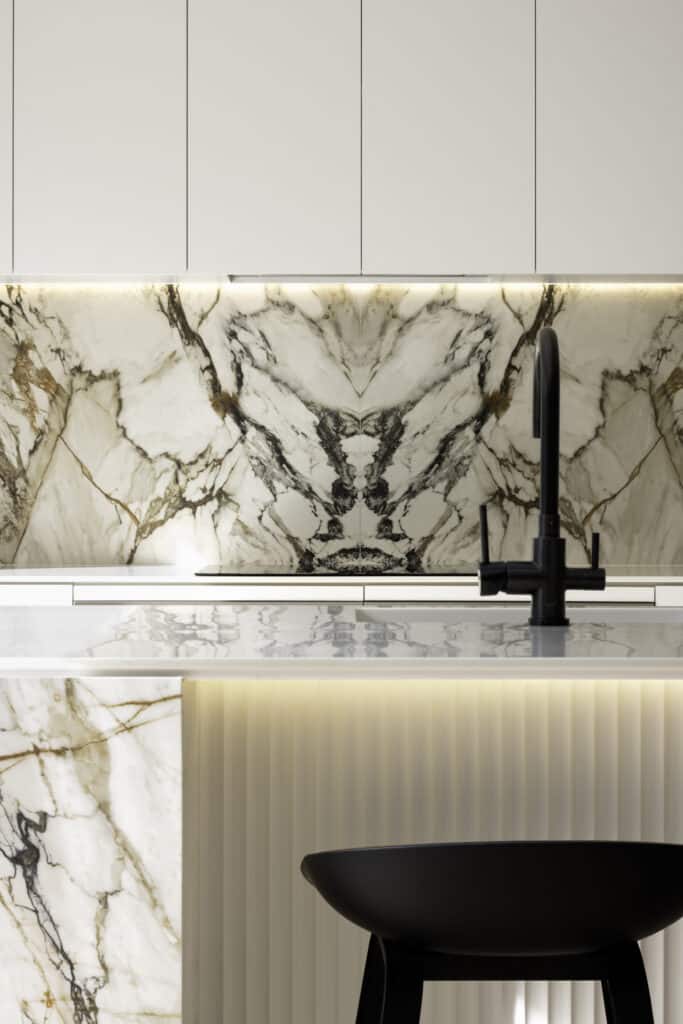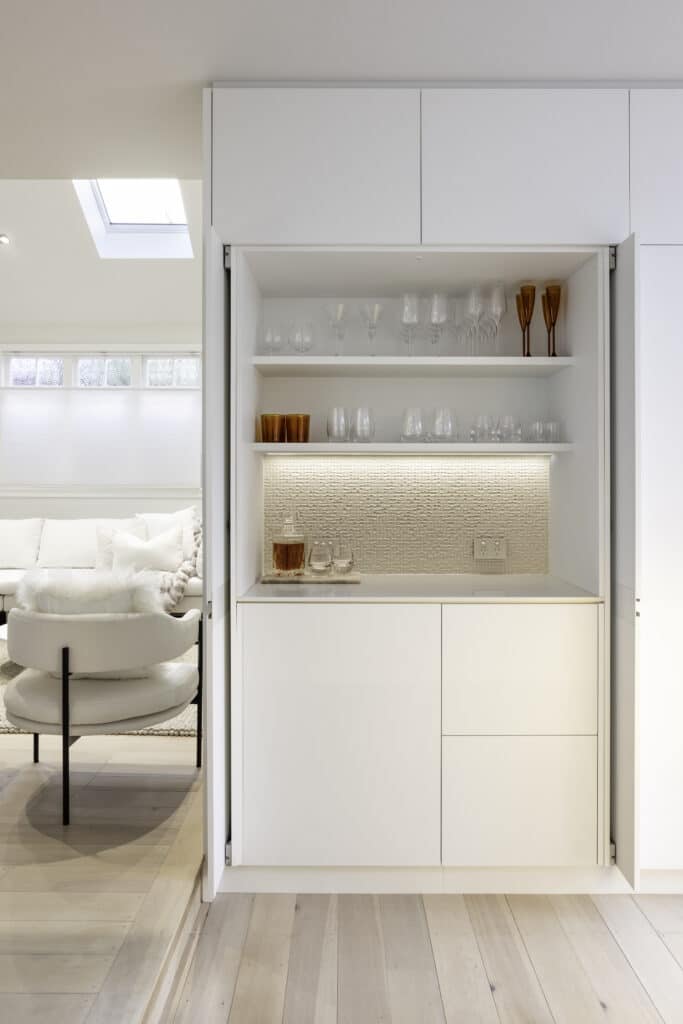Interior designer Rebecca Bailey on kitchen facelifts, sustainability and floating between minimalism and maximalism.

When approaching a kitchen design, Rebecca Bailey is of the opinion that the benchtop comes first — it is the central element, she says, and the material that all others link back to, tying in colours and textures.
While there’s no hard and fast rule to her design ethos, for Rebecca it’s about trusting the eye and shying away from trends. “I love mixing old with new, contemporary with traditional and anything quirky,” she says of her work.
Looking to a diverse cohort of design greats for inspiration, including Britt Moran and Greg Natale, it’s an unapologetic use of colour and texture that appeals and translates into her own design aesthetic.

That’s exactly the case in the kitchen pictured here, designed as part of a wider renovation and extension of a 1900s villa, in which a bold palette of neutrals, black and gold were utilised emanating from the central design object, the Calacatta Luxe porcelain stone benchtop with its dramatic veining and gold undertones. From there, “I picked out the gold veining and ran with it in the form of an opulent, burnt orange velveteen for the booth seat”.
The brief for this kitchen was for a contemporary space with a touch of glam. The result is both sophisticated and luxe, striking in tone and texture, and providing subtle visual cues to and links with the rest of the house through design moves such as the vertical lines that are echoed throughout the kitchen and wider interior. This in itself is the sum of two parts: the front kept traditional with ornate ceilings, fretwork and architraves, and the rear a more contemporary element with a bold but minimalist approach.

“Kitchen design in New Zealand at the moment is exciting, steering away from traditionally ‘safe’ palettes and experimenting with more bold, textural statement pieces. I think technology will be more central to kitchen design in the very near future, with the kitchen becoming more of an extension of mobile devices. I think too, New Zealanders are more concerned with sustainability and as part of that it’s about looking at how to make the most of what already exists in a kitchen, considering its carbon footprint and ensuring we utilise and upcycle any elements that lend themselves to an extended lifetime — an approach that helps in design situations where budget is limited. This is always a challenge but it’s a space I thoroughly enjoy working in.”




